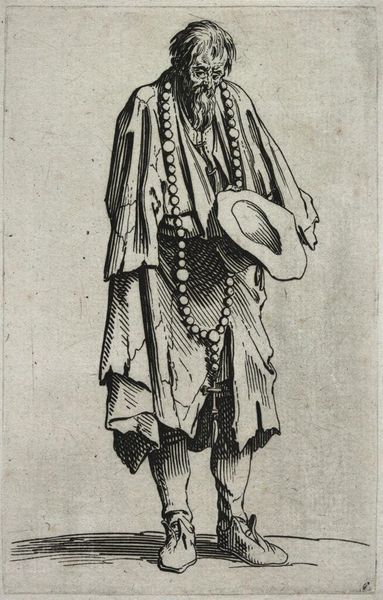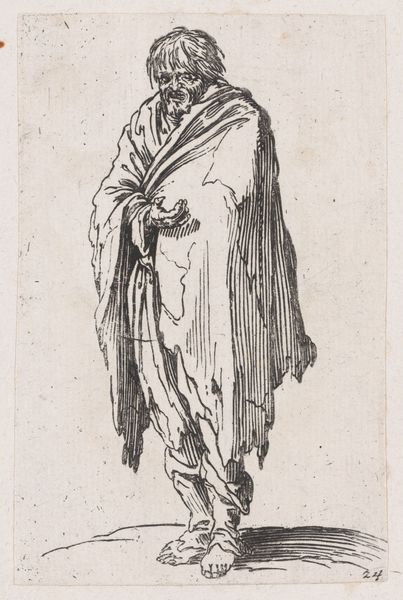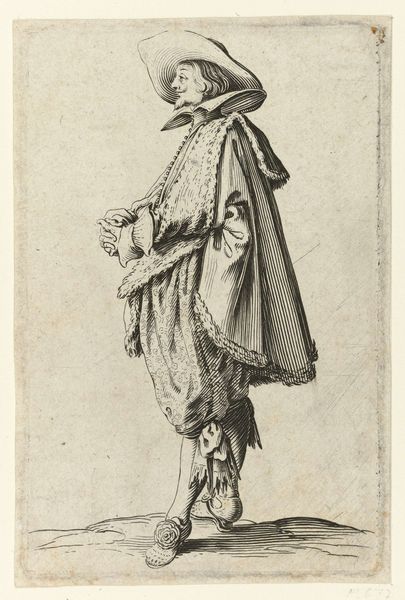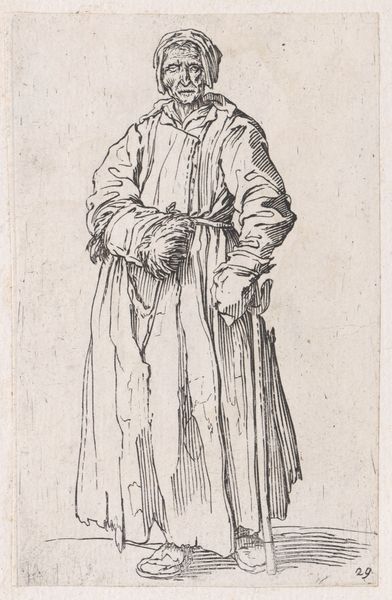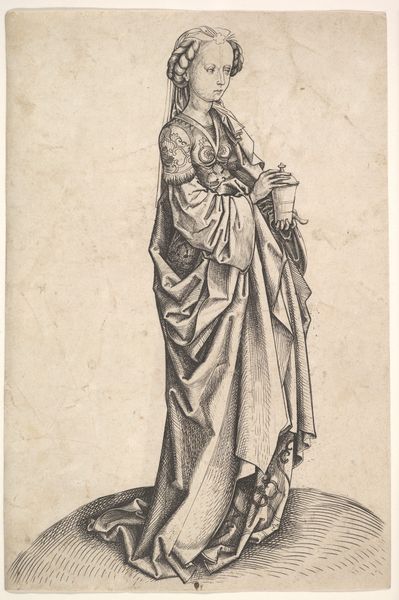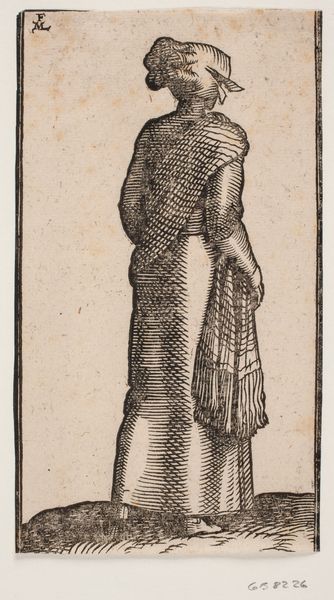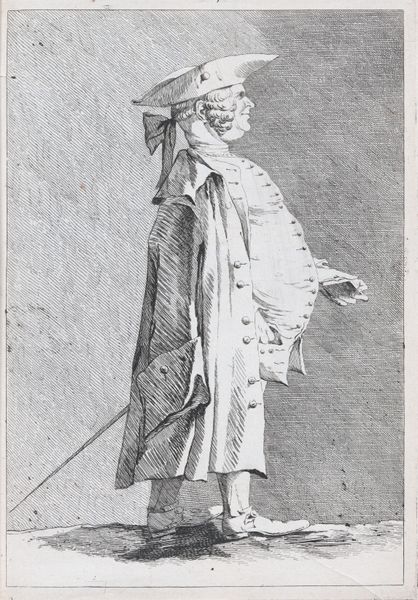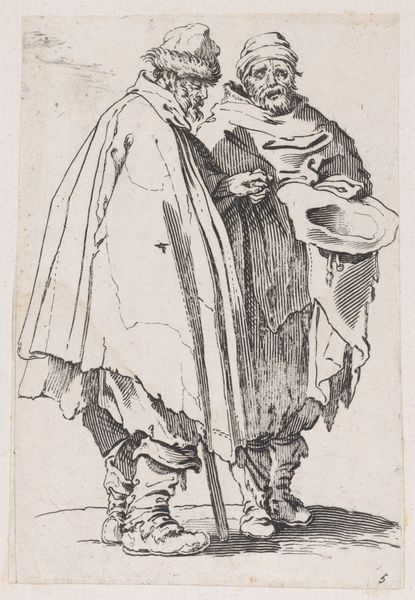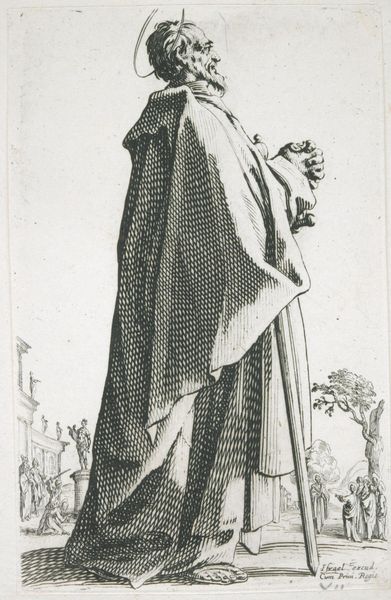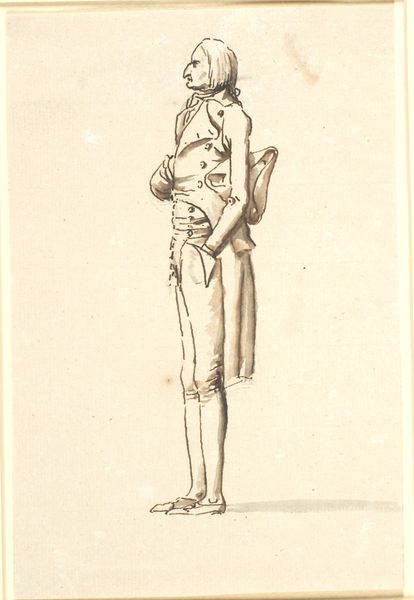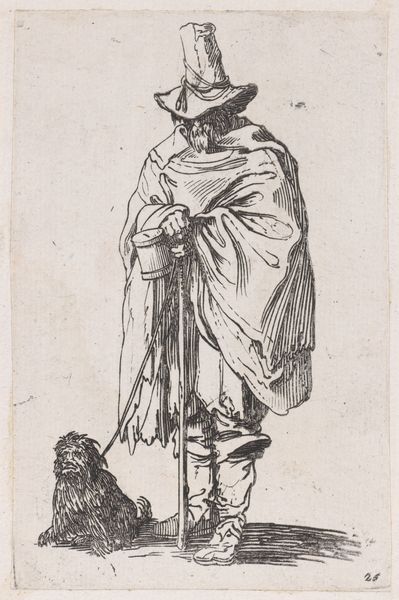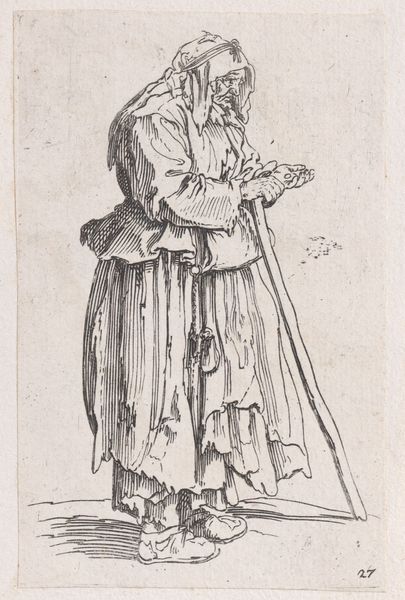
Reverse Copy of Le Mendiant au Rosaire (The Beggar with a Rosary), from Les Gueux suite appelée aussi Les Mendiants, Les Baroni, ou Les Barons (The Beggars, also called the Barons) 1625 - 1700
0:00
0:00
drawing, print, engraving
#
portrait
#
drawing
#
baroque
# print
#
figuration
#
genre-painting
#
engraving
Dimensions: Sheet: 5 3/8 x 3 3/8 in. (13.7 x 8.6 cm) trimmed and backed
Copyright: Public Domain
Curator: This engraving, held at the Metropolitan Museum of Art, is known as *Reverse Copy of Le Mendiant au Rosaire*, or *The Beggar with a Rosary*. The piece dates roughly from 1625 to 1700. What are your initial impressions? Editor: Stark. The figure’s pose suggests resignation. Notice how the lines emphasize the weight of his posture, contrasting sharply with the hopeful symbol of the rosary. Curator: Indeed, the rosary carries immense symbolic weight. Here, it represents more than just piety; it's a complex signifier, linking religious devotion to poverty and the very real human suffering prevalent during the Baroque period. The visual focus on his wretched state encourages viewers to contemplate their spiritual obligations towards society’s outcasts. Editor: It makes me consider the socio-political climate. Beggars were everywhere. These images circulated amongst wealthier audiences – what function did that serve, socially? Was it to stir compassion or simply to categorize a segment of the population? Curator: Perhaps both. The print also highlights the complicated interplay between visibility and marginalization. Notice the details—the tattered clothing, the weary gaze. He’s marked, made visible. At the same time, his identity as an individual almost dissolves into this symbolic representation of "the beggar." The historical viewer probably felt the same complex pull between compassion and a desire for social order. Editor: Right. The printing process itself facilitated a wide distribution and replication of social types, constantly reinforcing prevailing social structures and morality. Curator: Absolutely. We must not ignore how the imagery serves power, especially when poverty, or rather its visual display, is curated for the privileged viewer. I mean, we are still reckoning with these very types of projections in our modern media! Editor: A grim, yet potent reminder of the continuity between visual symbols and historical circumstances, and how certain motifs retain their power. It reminds us of how the depiction of the less fortunate evolves, or doesn't. Curator: Precisely. It serves as a harsh reminder of societal divides and their portrayal within visual culture.
Comments
No comments
Be the first to comment and join the conversation on the ultimate creative platform.
